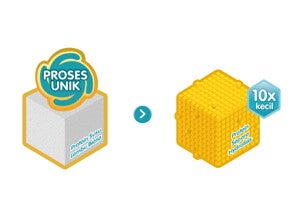
Did you know that allergies are linked to the immune system? Most of the time when your child has an allergy, it is a result of his or her immune system reacting to a false alarm. Allergens are normally harmless substances; however, when a child is allergic to that substance, the immune system produces antibodies to protect your child by attacking the allergen. If your child has allergies, and encounters an allergen, there may be reactions such as rashes, itching, runny nose, , wheezing or other more severe symptoms. Common allergens include dust mites, mould, pet dander and tree pollen.
Your Child’s Immune System
The immune system is a very vital part of your child’s body. It helps keep infectious and harmful microorganisms at bay, by preventing them from entering the body and destroying those that do get in. In short, it helps defend your child against sickness or disease. That’s why they may mistakenly identify allergens as harmful invaders, and react with defensive antibodies.
Types of Allergies
Airborne Allergens
There are allergens that are carried through the air, and may cause allergic reactions when breathed in. Some examples of airborne allergens include dust mites, pollen, mould, and pet allergens. When exposed to airborne allergens, your child may face difficulty breathing, wheezing or sneezing.
Food Allergies
Food allergies occur when you eat food which you’re allergic to, such as cow’s milk, eggs, shellfish, other seafood and nuts. When eaten, they can cause symptoms such as hives, itching skin, and diarrhoea.
Other Allergens
Your child may also be allergic to other substances at home. For example, certain types of medicines may cause allergic reactions. There are also chemicals which may cause allergic reactions, such as some laundry detergents. In such cases, you should speak to your doctor for advice.
Where Do Allergies Come From?
Atopic diseases, or allergies, can be hereditary. For example, if both you and your partner have allergies, your child may be at a higher risk of allergy. If you happen to have an allergy, your child runs a 20-40% risk of developing an allergy as well. If both you and your spouse suffer from allergy, there’s a greater chance (50-80%) that your kid will too.1-6
What Are Some Early Signs of Allergies?
Rashes are one of the early signs of allergiesand it can come in the form of a milk rash, more commonly known as ruam susu (raised red bumps on the skin) or heat rash, ruam panas (caused by sweat that has been trapped under the skin). Early signs of allergies are also known as minor sensitivities and can take form as bodily discomforts ranging from itchiness, upset tummy and bloating.
What Can You Do About Early Signs of Allergies?
Besides knowing the early signs, it is important to manage them early as these minor sensitivities may progress into full-blown allergies as your child grows up. That is where NANKID OPTIPRO HA 3 comes in. Made with Gentle Protein* that is 10x smaller than regular cow’s milk protein, the proteins are easy to digest, less allergenic and therefore less likely to trigger allergic reactions or minor sensitivities in children.
Did you know?
Minor sensitivities in children like itchiness, rashes, upset tummy and bloating are all early signs of allergies. The right proteins in your child’s diet can help minimise these bodily discomforts. NANKID OPTIPRO HA 3 uses Gentle Protein*, which are cow’s milk proteins broken through a unique NESTLÉ process so that they are 10X smaller. This makes the proteins easy to digest and less likely to trigger allergic reactions or minor sensitivities in children.
With NANKID OPTIPRO HA 3, you can let your child feel the world, free from discomfort.
NANKID OPTIPRO HA 3 contains Partially Hydrolysed Protein, 50mg of DHA & ARA** and 100 million BIFIDUS BL beneficial bacteria**
*Refers to Partially Hydrolysed Protein
**per 100g of milk powder
References:
1. Exl BM and Fritsché R. Cow’s Milk Protein Allergy and Possible Means for Its Prevention. Int J Applied Basic Nutr Sci 2001;17:642-651.
2. Aberg N, Sundell J, Eriksson B et al. Prevalence of allergic diseases in schoolchildren in relation to family history, upper respiratory infections, and residential characteristics. Allergy 1996;51:232-237.
3. Bergmann RL, Edenharter G, Bergmann KE et al. Predictability of early atopy by cord blood-IgE and parental history. Clin Exp Allergy 1997;27:752-760.
4. Hays T and Wood RA. Arch Pediatr Adolesc Med 2005;159:810-816.
5. Tariq SM, Matthews SM, Hakim EA et al. The prevalence of and risk factors for atopy in early childhood: A whole population birth cohort study. J Allergy Clin Immunol 1998;101:587-593.
6. Wahn U, Bergmann RL and Nickel R. Early life markers of atopy and asthma. Clin Exp Allergy 1998;28:20-21.


























